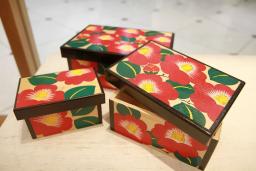Let's Look at Yamato's National Treasure Tsujunkyo Bridge & Its Other Famous Bridges
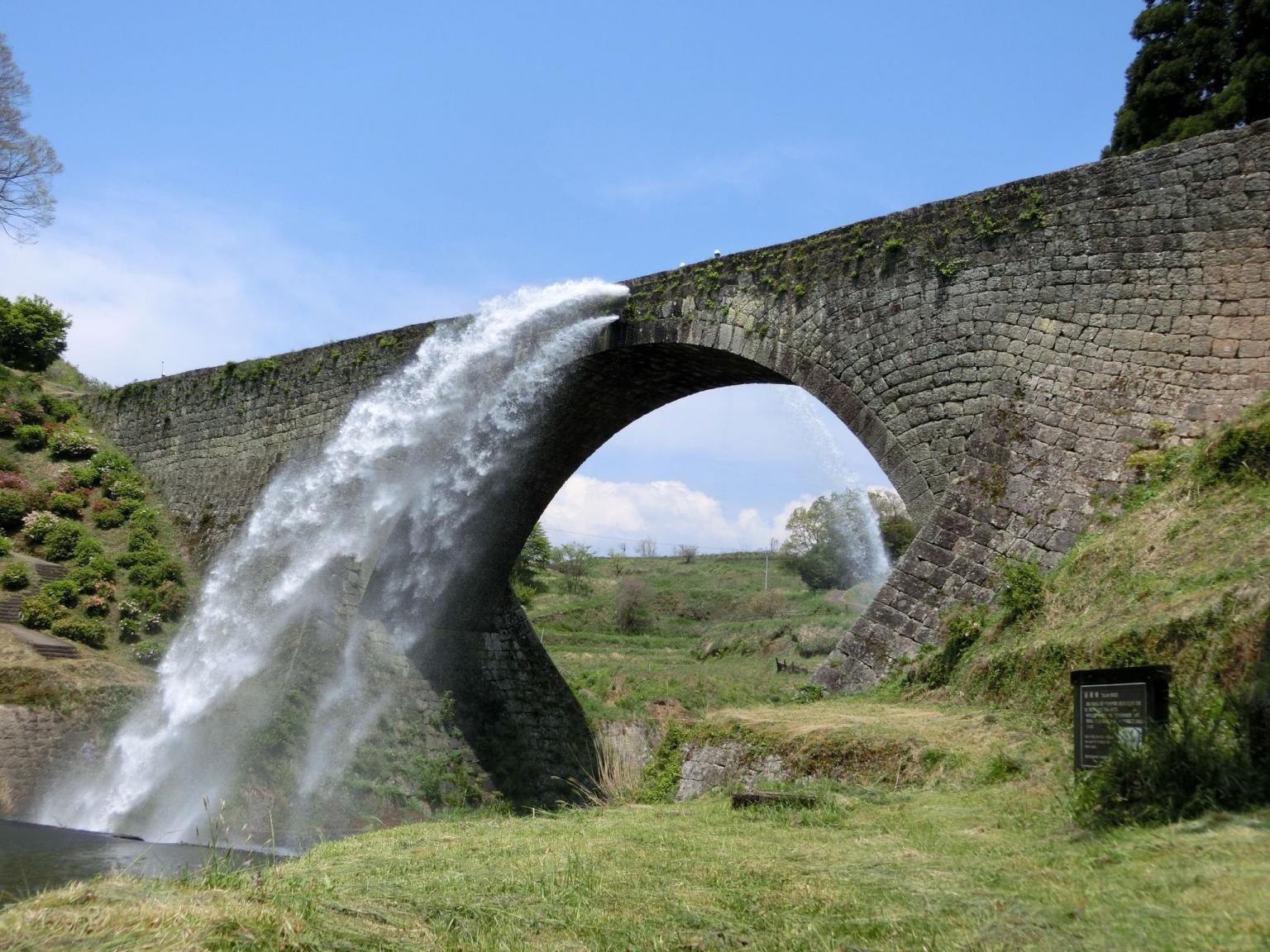
On September 25th, 2023, Tsujun Bridge was designated as a National Treasure. But Tsujun isn't the only bridge in the town of Yamato—interested visitors can find other unique spans like the Ayunose and Mamihara bridges. Here, we'll take a look at Yamato's famous bridges.
Tsujun Bridge: Providing Water and Inspiration for 170 Years
Tsujun Bridge
Tsunjun Bridge is an aqueduct built in 1854 in Yamato, Kamimashiki County for the purpose of providing the Shiraito Plateau with water for farming. The arched stone bridge was built utilizing the knowledge and technology of the time and has been cherished by the local community for 170 years since its construction. After Aoi-Aso Shrine in Hitoyoshi, Tsujun Bridge is the second National Treasure to be recognized in Kumamoto Prefecture. It is, however, Japan's first civil engineering structure to be designated.
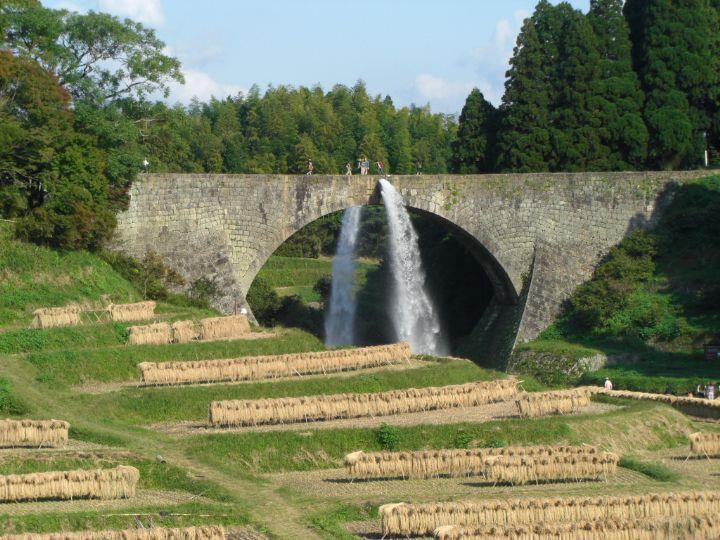
The construction of Tsujun Bridge was initiated by a man named Yasunosuke Futa. He noticed that the lack of water available to the residents of the Shiraito Plateau stifled their ability to farm and prosper, so he came up with a plan to build an aqueduct to provide them with water. About 7 years before Tsujun was built (in 1847), Futa witnessed the completion of Reidai Bridge, a stone arch bridge, and became convinced that a similar structure may be feasible to bridge the gap to the Shiraito Plateau.
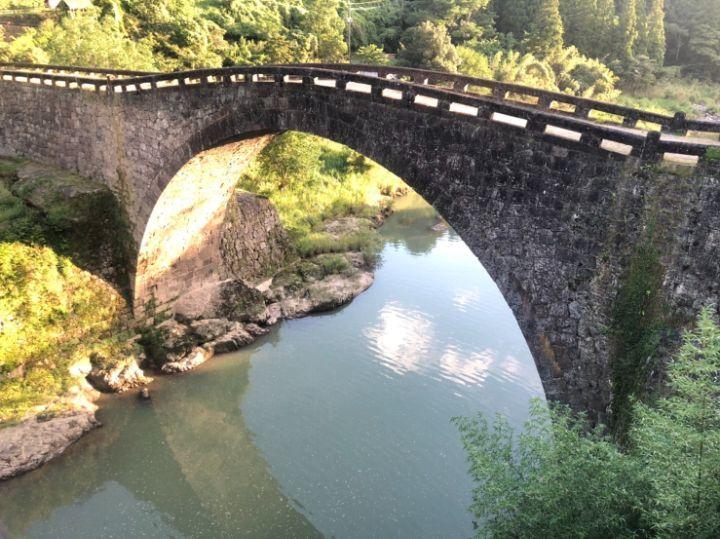
At the time, the Reidai Bridge was one of the largest stone bridges in Japan. Upon seeing it, Futa immediately commissioned the construction of Tsujun Bridge to a pair of stonemason brothers from nearby Yatsushiro. Tsujun would not only be higher than Reidai Bridge, but also needed to function as an aqueduct and had to be built within a limited budget. Overcoming numerous challenges, Tsujun Bridge was completed as one of the largest stone arch bridges at the time. It was so well built that it even successfully withstood the 2016 Kumamoto Earthquakes and the heavy rains of 2018.

According to Shinjiro Ishiyama, a guide at the Tsujun Bridge History Museum, the bridge was built over a gorge as an aqueduct to provide irrigation water to the Shiraito Plateau, which is surrounded on all sides by valleys. Tsujun is an amazing feat of engineering, housing three parallel water pipes, each one constructed out of over 200 one-meter square stone blocks, for a total length of around 120 meters. This innovative structure was designed to be both sturdy and easy to repair, and is considered a masterpiece of modern irrigation architecture.
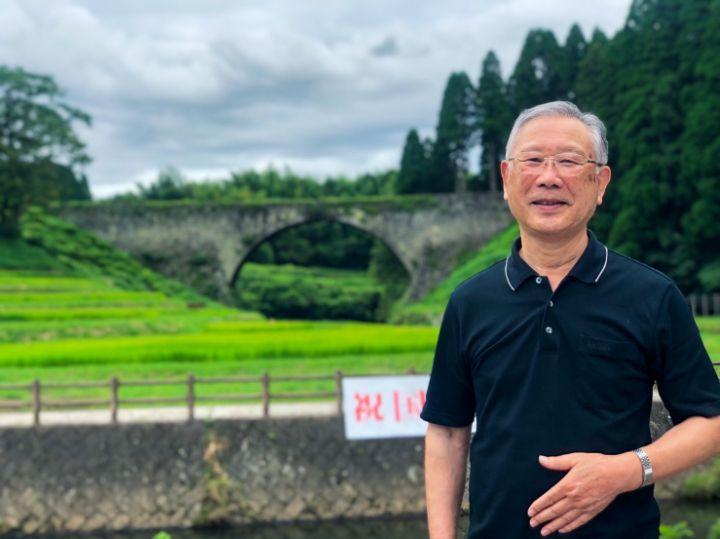
According to Mr. Ishiyama, one of the highlights of Tsujun is its remarkable durability. The clever design not only supports the weight of the stone pipes, but also increases the bridge's ability to withstand earthquakes.
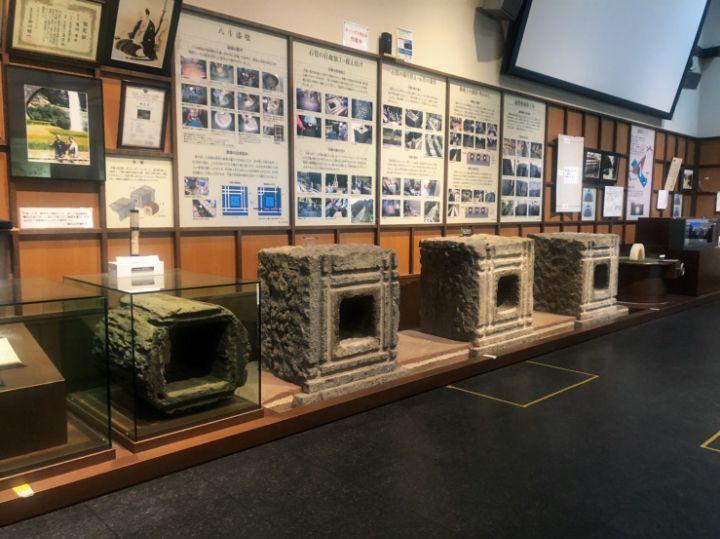
Built through the dedication of Yasunosuke Futa, the local county chief, Tsunjun Bridge now stands as a remarkable testament to community spirit. From planning to execution, Futa played a vital role in managing the project by overseeing progress and managing expenses. The bridge's construction sets an extraordinary example of local collaboration with the greater government of the domain and showcases the community's commitment towards advancing social infrastructure.

The Tsujunkyo Roadside Station offers a picturesque view of Tsujun Bridge and houses a museum where you can learn about the bridge's history and background (admission: ¥310 for adults, ¥160 for elementary and junior high students). The museum illustratates how important Tsujun Bridge was for the local community and features a video showing what the aqueduct originaly looked like, a model explaining the structure of the bridge, and a a full-sized replica of a piece of stone pipe on display.
The Kumamoto Domain supposedly allocated abundant funding for regional administrative organizations, providing local stonemasons and carpenters with considerable experience on civil engineering projects. This enabled efficient progress on the numerous civil engineering projects that followed. Tsujun Bridge serves as a symbol of the technological heritage present in modern stone bridges throughout Kyushu.
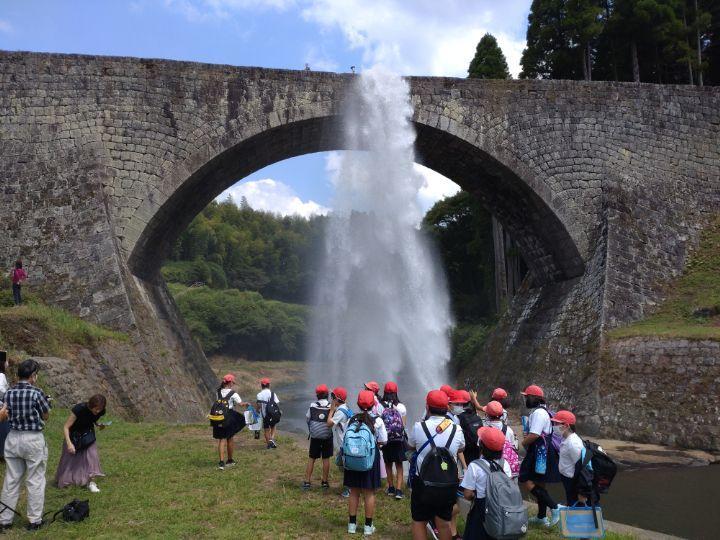
Tsujun Bridge was built upon the past civil engineering know-how accumulated in Kumamoto. Even today, it remains in the hands of local farmers. The management of the water channel leading to Tsujun Bridge and the task of opening the floodgates are all done manually by local residents. Not only is Tsujun itself a cherished local treasure, but it also acts as an important part of local culture we wish to preserve.
| Name | Tsujun Bridge |
|---|---|
| Phone | 0967-72-1115 (Yamato Town Hall Commerce and Tourism Division) |
| Address | 184-1 Shimoichi, Yamato-cho, Kamimashiki-gun (Tsujunkyo Roadside Station) |
| URL | 通潤橋(ホームページ) |
A Mesmerizing Masterpiece in Harmony with Nature
Ayunose Bridge
Ayunose Bridge spans the Midori River, connecting the Suge and Shirafuji districts of the town of Yamato. Built as part of the Kumamoto Artpolis project, Ayunose Bridge was designed by bridge designer Miyoko Ono and took six years to complete after starting in 1993. Its unique, asymmetrical design features a Y-shaped pylon and a cable-stayed bridge deck 390-meters long and 140-meters tall.

The surprising, innovative design harmonizes with the rich, green natural environment of the Midori River. The bridge also features a walkway, allowing pedestrians to walk across its 390-meter span. At the end of the bridge, there is an observation deck where visitors can enjoy the scenery of the Midori River Gorge.
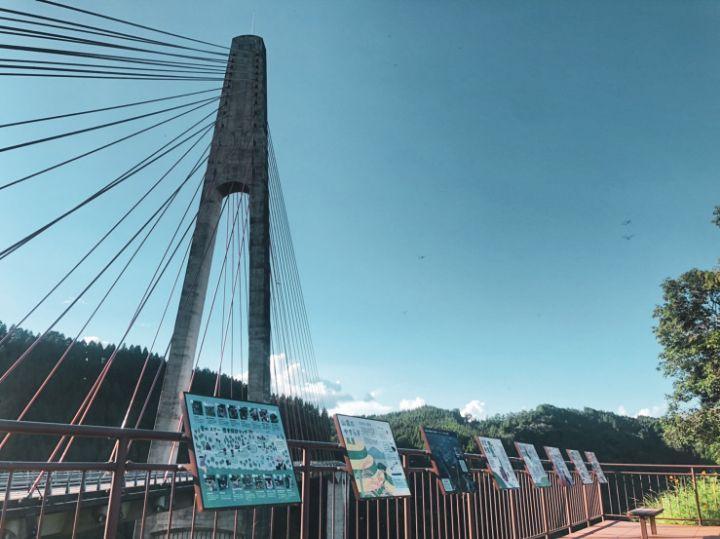
Ayunose Bridge crosses the Midori River Gorge, a dynamic, V-shaped, 140-meter deep ravine that offers breathtaking views. Inspired by this scenery, the bridge was designed to blend in with its surroundings.
The Ayunose Bridge serves not only as a means to get from one place to another, but also is meant to encourage visitors to admire the valley's landscape from on and around the bridge. The bridge's metallic orange cables offer a constantly changing and impressive view against the backdrop of the sky.
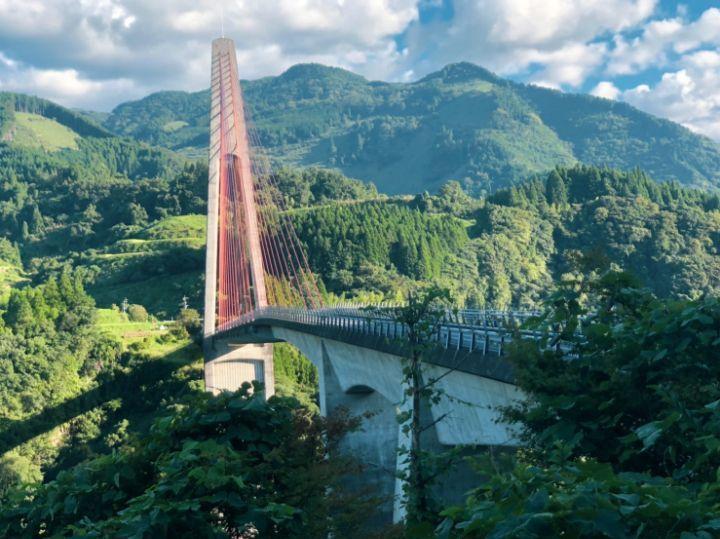
Ayunose Bridge was awarded Honorable Mention at the Kumamoto Landscape Awards in 1999, a Good Design Award in 2000, and First Prize at the 2002 Civil Engineering Society Design Prizes. Ayunose Bridge proudly graces the cover of the architect Miyoko Ono's book of collected works titled BRIDGE.
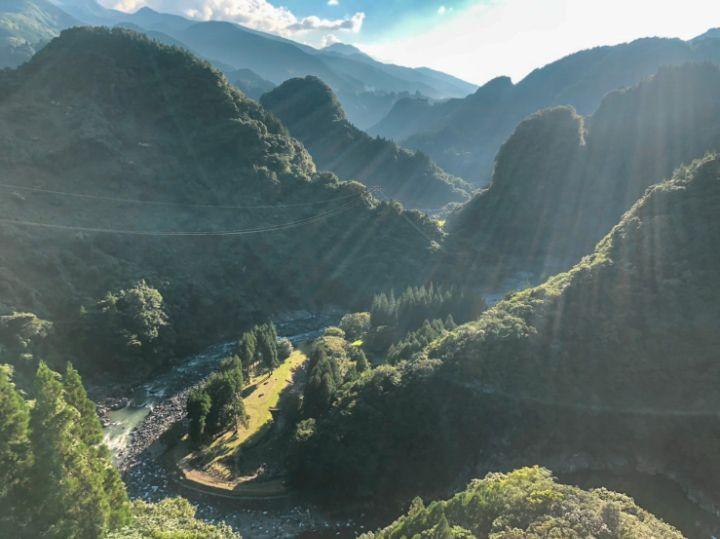
The panoramic views of the Midori River Gorge from the top of the bridge are breathtaking. The crystal-clear stream river through the mountains and the picturesque landscape bathed in sunlight are sure to impress. If you're visiting Yamato, make sure to pay a visit to this iconic, must-see bridge.
| Name | Ayunose Bridge |
|---|---|
| Phone | 0967-72-1115 (Yamato Town Hall Commerce and Tourism Division) |
| Address | 488-1 Suge, Yamato-cho, Kamimashiki-gun |
A Charming Mouth-Shaped Double Bridge Connecting Wedded Rocks with a Shopping Street
Mamihara Bridge
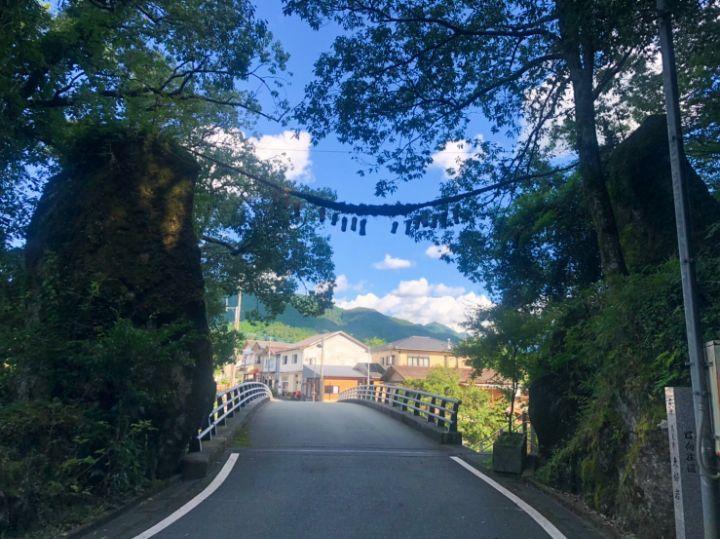
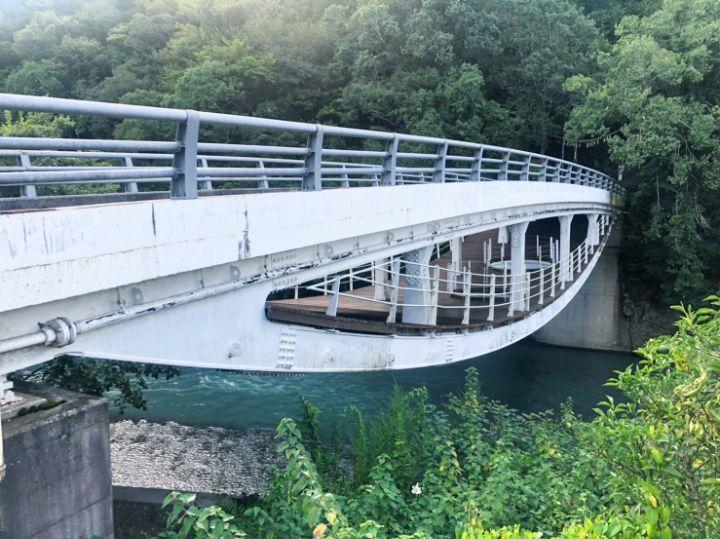
Mamihara Bridge spans the Gokase River, which runs along the border between Miyazaki and Kumamoto prefectures. Located at the entrance of the Mamihara Shopping Street that once thrived as a post town, this bridge crosses over to the Meoto Iwa rocks (Wedded Rocks). The bridge itself is visually striking and is a local symbol that resonates with the hearts of the locals. The bridge was designed with the idea of visitors being able to spend their time here as they see fit.
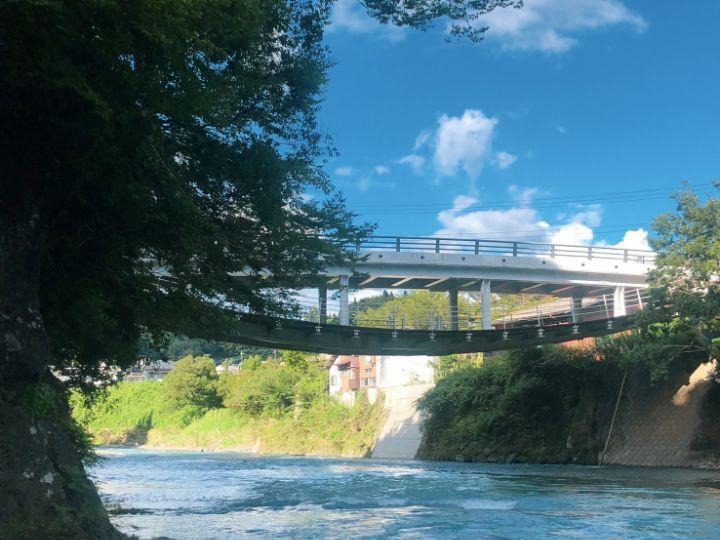
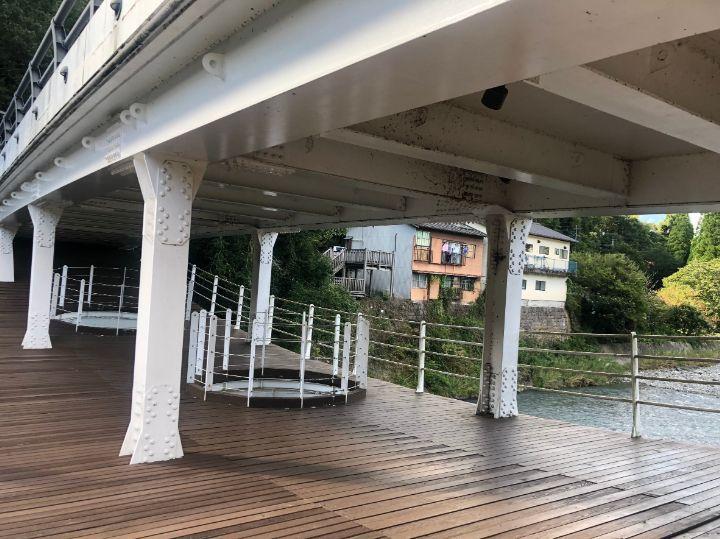
Mamihara Bridge and its mouth-like shape were designed by Jun Aoki, who joined Arata Isozaki's atelier in 1983 and founded Jun Aoki & Associates in 1991. The bridge won the Sawayaka Machikado Award at the 1995 Kumamoto Landscape Awards.
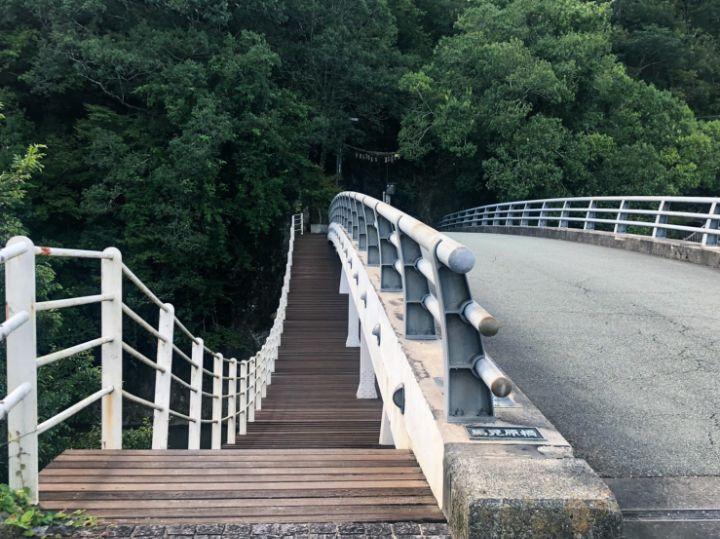
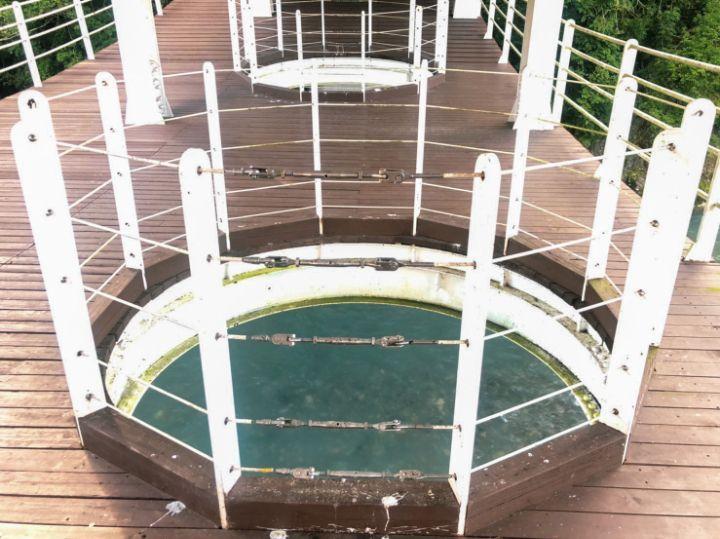
Consisting of a 5.8-meter wide upper bridge and a 7.5-meter wide lower bridge, Mamihara Bridge is designed so that pedestrians are naturally drawn into the space between the upper and lower bridges. The floor of the lower bridge is built out of local cedar and has two large holes that offer a unique look at the Gokase River that runs below. The design reflects the unique personality of the architect.
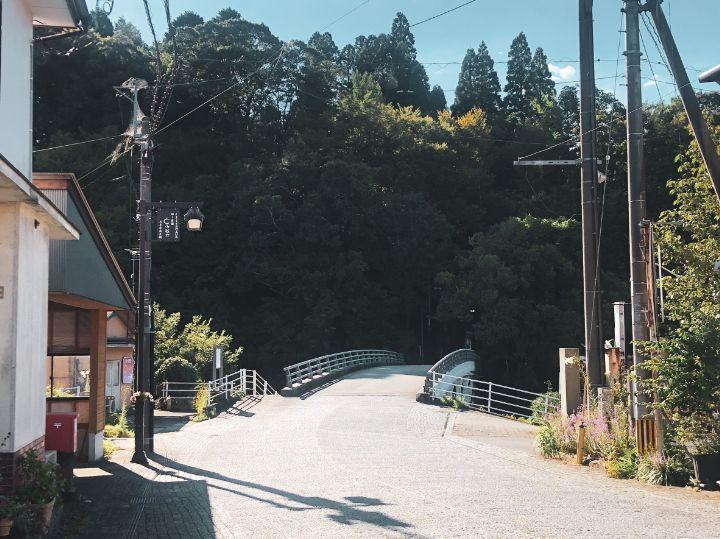
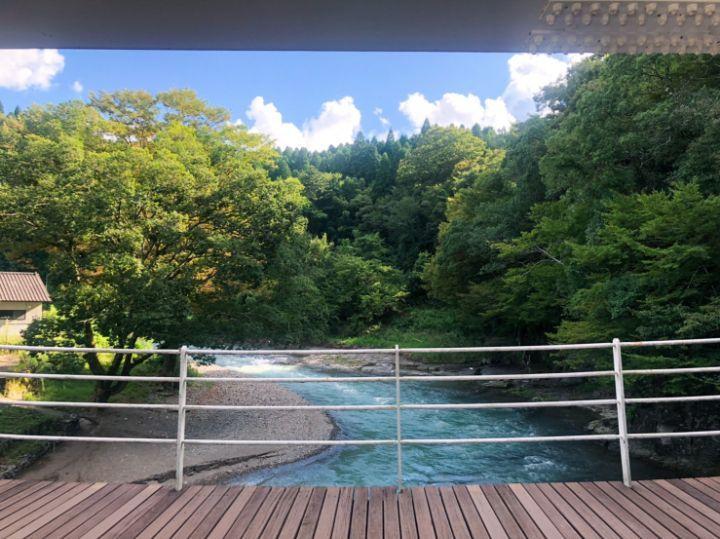
The design is based on the idea of taking things like roads and topography that are famliar to us and slightly modifying how they interact to create a unique experience.
Mamihara Bridge was built using standard construction materials commonly used on civil engineering projects. The design, however, is able to transform these simple materials into something that adds a little spice to your everyday life. Jun Aoki, the architect of the bridge, stated, "I only had to design the handrails on the lower bridge section. The use of standard materials for everything else makes it look like the bridge wasn't designed at all." Mamihara Bridge shows us how, through design, a small amount of playfulness in our daily lives can change how we see things.
| Name | Mamihara Bridge |
|---|---|
| Phone | 0967-72-1115 (Yamato Town Hall Commerce and Tourism Division) |
| Address | Takigami, Yamato-cho, Kamimashiki-gun |




